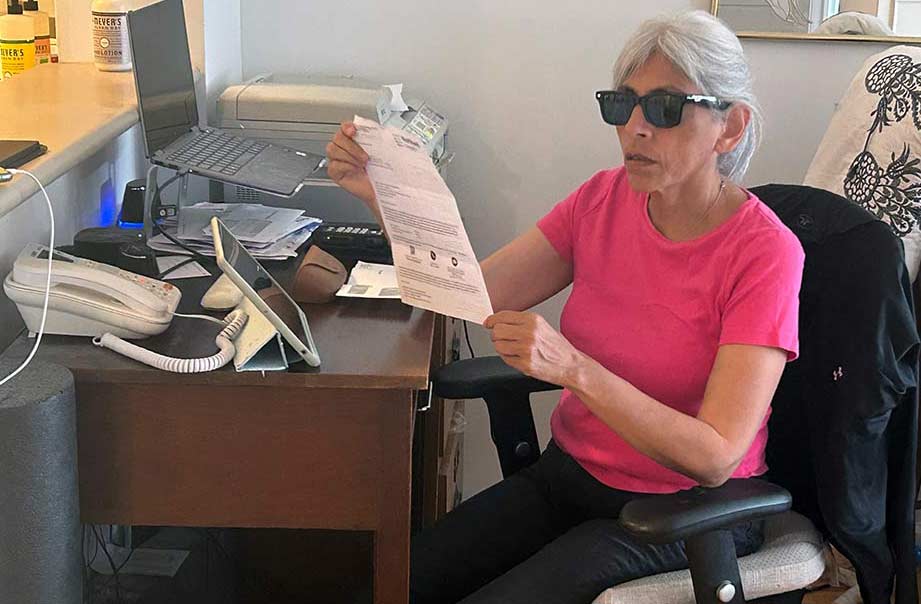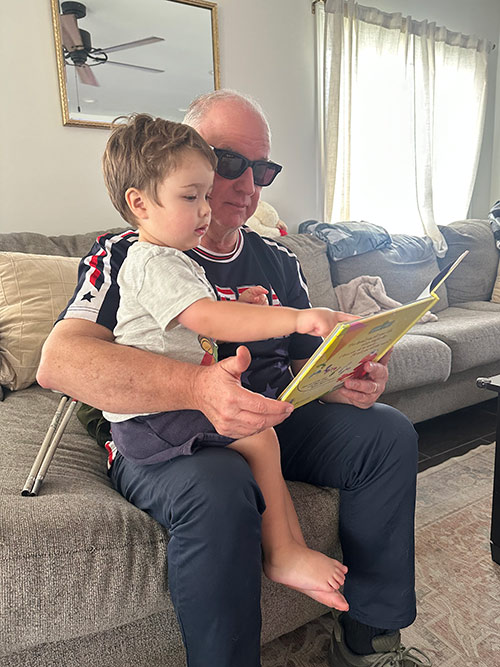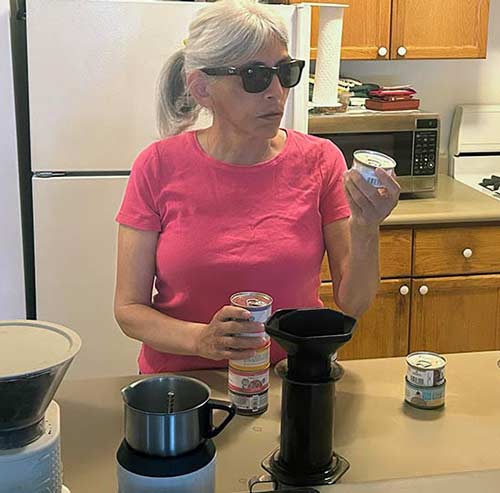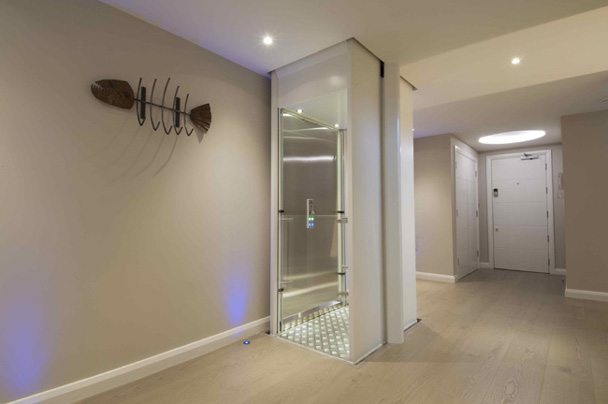The proliferation of assistive technologies for the blind in recent decades, whether it’s a smartphone or a specialized computer program like ZoomText or JAWS, has helped connect the visually impaired to mainstream society in ways that were once unimaginable. They enable the blind to perform mundane household tasks, like sorting cat food cans, as well as bigger projects like conducting a meeting while pursuing a career.
Although clearly life-changing, the technology behind many personal assistive devices has often been clunky to wear gadgets with spotty or limited outcomes. Nonetheless, I’ve maintained a belief that exciting, intuitive and unobtrusive accessible technology for the blind would exist in my lifetime and help me reclaim some autonomy.
Becoming blind as an adult, I conceded certain aspects of sighted life and activities. I created workarounds where I could and I constantly gauged for the parts of the day to forego. That is, until I gained access to and acquired smart accessible technology and learned to integrate new tech lifestyle habits.
I am completely blind. My final vision loss a couple of years ago made my world very small at first. When I got my fight back, I re-engaged with the New York Commission for the Blind and Visually Impaired and received services. While picking up new computer equipment at The Lighthouse Guild, my adaptive technology instructor, Ed Plumacher, showed me the Meta Ray-Bans, the new smart glasses that connect to devices like smart phones and tablets.
While Ed was setting up my new computer, I listened as he received work calls on his mobile phone. He replied to each call with text messages using voice commands, all while his hands remained typing on the laptop keyboard. “How did he do that?” I wondered. Ed read my mind and explained he was using Meta Ray-Ban glasses.
Ed then demonstrated other functions, like the glasses describing the room, including what I was wearing, and live translation from English to Spanish. We had a spontaneous bilingual conversation. I spoke to him in Spanish; the glasses translated what I said to him in English. Then he directed the glasses to provide the Spanish response to my statement. I was struck by the glasses correctly translating an oblique Spanish idiomatic expression I used. Ed said the Meta Ray-Bans also support other languages like French and Italian. With that demonstration, I knew I had to try them out for myself.
Ed kindly loaned me a new pair and did the initial setup. Since we are both functionally blind, parts of the setup were especially difficult. For example, there’s a point at the start of the process where a blue light shows in order to pair the glasses with a smartphone. This was tough to do when all we had was a tiny bit of light perception between us. We eventually got it set up, but it took us about three hours.—I suspect those with more vision can do the setup in much shorter time.— In the end, it was doable but this was one of those situations that called for extra reserves of patience and tenacity. Off I went with my new Meta Ray-Ban glasses!
The glasses are typical Ray-Ban frames that charge when inside their case and have a battery life of six hours. There are tiny open-air speakers embedded in the arms (temples) of the glasses. Swiping the side of the temple controls volume and tapping the temple can execute commands.
The camera is located on the top right corner of the frames and can capture a piece of writing held in front of it. With the “Hey Meta, look and read this” prompt, the glasses can read or summarize letters, bills, menus. It only takes natural head movements to master this function. The “Look and tell me what you see” command can be used to get a description of everything the camera captures in a room and can locate a specific item. For example, “Hey Meta, do you see a set of keys?” followed by, “Where are they?” often provides accurate visual help finding things if there’s no one sighted around to help.
I found a very small learning curve for this and other functions. It mostly entailed learning the verbal commands. When I forgot the precise phrasing, the AI component recognized my intended question and prompted the correct command phrase.
On typical weekdays, I put on the glasses after having my coffee. I then ask for trivial, yet important, information to start the day, like the weather and forecast for the weekend. I then, typically, ask the glasses burning questions that kept me up the previous night, like what was Myanmar’s former name and when did it change. The device quickly searches the internet and the little speakers on the frames give me the answers. Then, when I’m satisfied, my brain is ready, I get to work.
I have used the glasses to assist with writing. In one to two seconds, without taking the time to open a browser and type in a research question, the Meta glasses does the searching and reads the information I need. I’ve also asked it to repeat information, facts and figures so I can type what I need for my purposes, and it does!
Being a non-braille reader, I’ve lost a crucial tactile knowledge-gathering method I didn’t realize I employed to retain and process information. As a blind adult, hearing and typing have replaced visual reading and handwriting. So, having the Meta glasses repeating paragraphs of information over and over to me as I type has been useful and productive for work and for my overall brain function.
The Ray-Ban Meta glasses have also instantly given me access to an extensive array of synonyms, antonyms and spelling, which has come in handy for writing. In fact, my glasses generated, produced, manufactured, suggested many of the adjectives in this piece.
It has taken time for me to acclimate to the experience of not seeing my environment. Being outdoors feels like risky business when I can’t see the curb, cars whizzing by or street signs and addresses. Being in unknown places feels disorienting and foreign. I decided to see how much the glasses could connect me to the physical experience of a doctor’s appointment.
Sitting in a waiting room at the massive Mount Sinai Hospital, the Meta glasses not only accurately identified the location as a hospital waiting room, it also described the furniture, the reception area and the patients sitting in chairs. When I asked for the location address, it answered and went on to tell me about the hospital wing I was in and other departments it contained. The Ray-Bans gave me more information about where I was than I’ve ever received from the companions who’ve helped me attend my appointments.
After my appointment, my friend and I, both serious walkers, decided to walk from Fifth Avenue and 101st Street, all the way home to Queens. It was a lovely spring day and the weather was perfect for a long walk. Along the way, I asked the glasses for information on where I was and the buildings we passed. It correctly told me when I was on the corner of 96thStreet and Fifth Avenue. It correctly identified the Met, although it was snooty about it. It answered my query by saying, “No, it’s not the Met. It’s The Metropolitan Museum of Art, also known as the Met.” The glasses then meticulously described the structure and its architecture. It also told me about the hot dog carts in front. This was marvelous fun.
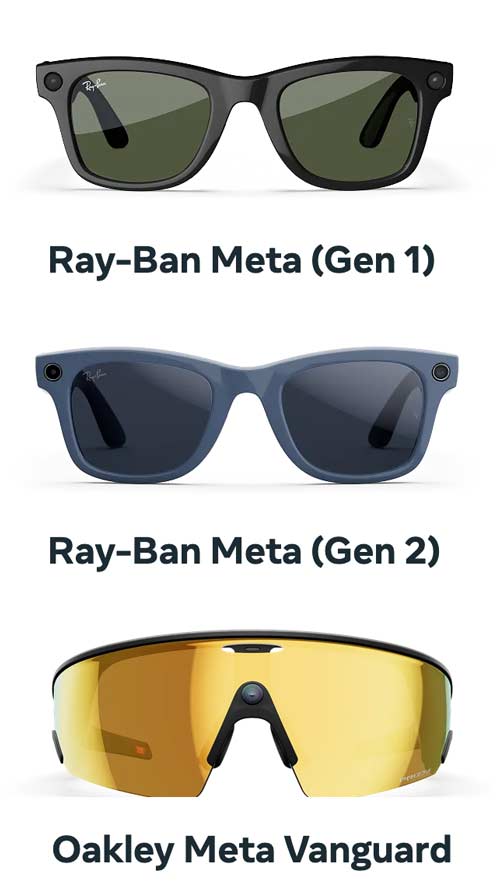 Stylish and functional eyewear for men and women, ideal for outdoor activities and vision correction.
Stylish and functional eyewear for men and women, ideal for outdoor activities and vision correction.The New York Commission for the Blind and Visually Impaired eventually issued me my own pair. As of September of 2025, the New York Commission provides Meta Ray-Bans for blind and visually impaired high school seniors, college students, and people who are employed. The retail purchase price point for standard Meta Ray-Bans starts at $300 and can range up to $379 depending on style, color and lens type.
I have a bit of light perception and use the pattern of ceiling lights in my apartment to guide me from room to room, so the commission approved me for a pair of transition lenses. Before, when using the loaner Ray-Bans, I would have to take them off whenever I left my office chair and moved about. Now with the transitions, I can keep them on all day on most workdays. I make calls, answer the phone, send texts, listen to incoming messages from my iPhone and other messaging apps like WhatsApp. I listen to my music subscription or Audible book during a break or at night.
A quality of life function the Meta AI glasses supports is one that I had been reticent to try. Be My Eyes is an accessibility app launched in 2015. It is a service that uses volunteers from all over the world to provide sighted assistance through the use of a smartphone’s camera. (Access permissions are required.) I’ve heard favorable comments about Be My Eyes but have been uncomfortable giving a stranger camera access to my personal space. Encouraged by my positive interactions with the Meta glasses, I finally relented and decided to give it a go.
I connected to a young volunteer named Bianca, who identified the cat food flavors of the cans I held before the glasses. She happily agreed to chat with me about her experience as a Be My Eyes volunteer. According to Bianca, Be My Eyes blew up on TikTok in the Spring of 2025, when someone posted their first volunteer session. That’s how she heard about the app. Since then, the pool of volunteers has grown to be greater than the number of Be My Eyes users. Bianca shared that her reason for volunteering is because, “I want to help people like my cousin Austin who is blind from birth.”
Curious to know how the Meta glasses came to intersect with the blind community, I chatted with Ed and Brian Fischler, co-hosts of the podcast “That Real Blind Tech Show.” According to them, the Ray-Ban Meta glasses became available in the fall of 2023 and were originally designed for sighted working people on the go. In the Spring of 2024, the introduction of the AI component that enabled the user to interact with their environment through the camera caused the blind and visually impaired community to take notice. Once the hands-free utility and ease of use became known, the blind community began spreading the word through social media posts.
Blind techies and non-techies, alike, have said the glasses have made a positive impact on their work and personal lives. Ed described to me how he was able to “read” a book to his three-year-old grandson. First, he asked the glasses to read the text to him and he “read” what he heard out loud to his grandson. Then he asked the glasses to describe the images on the page. This way he could discuss the fantastical characters, colors and shapes his grandson sees on the pages of the book they were reading. I would have loved to have this technology when my son was small, to have that type of bonding moment.
After using the Meta Ray-Bans for a couple months, my daily life feels less stressful and more manageable. I’m still uncovering tools that affect what might seem trivial to a sighted person but are life-altering for a blind person. As an illustration, when I dropped a small poop bag I use to collect my cats’ offerings, I wasn’t in the mood to get down on my knees and sweep my hand in circles on the floor surrounding the litter box to find it. Honestly, I had a small momentary freak-out. But then I remembered the, “Tell me” function.
I tilted my head down towards the floor in the general vicinity where I thought the bag might be and said, “Hey Meta, look and tell me if you see a plastic bag?” My glasses answered, “Yes, there’s a green plastic bag on the wooden floor.” I then asked, “Is it at the top or the bottom?” It made my day by replying, “It’s at the top, next to the wall on the right.” Imagine my glee when I placed my hand where the glasses told me the green plastic bag would be and found it there. I’d forgotten my fan was on and hadn’t realized it had blown the bag a bit down the hallway. Inconveniences like this one throughout an average day can feel like a pile-on. The glasses are a significant step towards alleviating these inconveniences for blind people. It’s advancements like this that make me glad to be blind now instead of at any previous time in history.
I’ve become accustomed to asking my Meta Ray-Bans lots of far-ranging questions during the day, both for utility and for fun. There have been times when I forget I’m not wearing them, and ask out loud things like, “Hey Meta, when did Rumi write his poetry?” or, “Hey Meta, what’s the latitude and longitude of Ibiza?” I find I’m relying less and less on other talking assistive devices laying around my apartment because of the ease of use, discreet nature of the glasses, and their portability. As long as I’m connected to the internet and my smartphone Meta app is open, I’m good to go.
by Gina Velasquez
.png)

